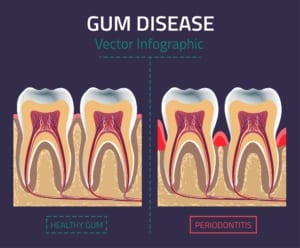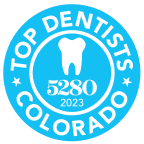 If you’ve been told you need a deep dental cleaning (also known as scaling and root planing), you may be wondering about the details of this procedure. What is it? How is it different from a regular hygiene visit? Do I really even need it? Today, our team at Metropolitan Dental Care in Denver explains what to expect before, during, and after your deep dental cleaning so you can be well-informed and prepared for your appointment.
If you’ve been told you need a deep dental cleaning (also known as scaling and root planing), you may be wondering about the details of this procedure. What is it? How is it different from a regular hygiene visit? Do I really even need it? Today, our team at Metropolitan Dental Care in Denver explains what to expect before, during, and after your deep dental cleaning so you can be well-informed and prepared for your appointment.
If you would like to schedule a visit at our practice, give us a call at 303-534-2626. We can help determine if a deep dental cleaning is necessary for you.
Before Your Deep Dental Cleaning
First, we have to determine if you’re a candidate for a deep dental cleaning. This is determined during a comprehensive periodontal evaluation.
In addition to checking your teeth for cavities, your dentist also assesses the bone levels around every tooth. To do this, a small instrument, called a periodontal probe, is inserted into the space between the tooth and gum. The probe will slide down into that space, and it will stop when it reaches the bone. A healthy tooth typically measures one to three millimeters. Four millimeters signifies gingivitis, the earliest stage of gum disease, while anything above a four denotes moderate to advanced disease.
Generally, a pocket that is five millimeters or deeper is impossible to reach with brushing and flossing alone. This is when we recommend a deep dental cleaning.
During Your Deep Dental Cleaning
A deep dental cleaning is considered a nonsurgical procedure. However, to reach the affected areas, patients are given local anesthesia to make them comfortable. If necessary other forms of sedation can be discussed.
Once you are comfortable, your hygienist thoroughly cleans the teeth, removing plaque and tartar deposits from the root surfaces. This is different from a regular cleaning because the surfaces under the gums are cleaned as well. Next, the hygienist smooths the root surfaces to eliminate places where bacteria can hide, thus reducing the risk of recontamination.
During the procedure, the hygienist typically uses an ultrasonic scaler to clean the teeth. He or she will likely use hand scalers as well, to remove deposits left behind in hard-to-reach areas. Finally, the teeth surfaces are polished with pumice or a gritty toothpaste. This removes harmful biofilm and surface stains.
After Your Deep Dental Cleaning
Many patients are concerned that they will experience pain or discomfort following their deep dental cleaning. However, due to the minimally invasive techniques used, most individuals report little to no tenderness. Heightened temperature sensitivity is a common side effect. However, it is temporary, and it usually diminishes within a week or two. In the meantime, over-the-counter pain relievers can help manage any discomfort.
Approximately four to six weeks after your deep dental cleaning, you will be scheduled for a reassessment. During this appointment, your dentist will measure the pocket depths around the teeth again. Because scaling and root planing removed irritants and reduces inflammation, you should see significant improvement in the numbers.
Once your gum disease is stabilized, we will place you on a routine cleaning schedule. While many individuals find that six-month cleanings are effective, some patients will need more frequent visits, especially those who are more prone to decay and gum disease.
Contact Your Denver Dental Team Today
To learn more about deep dental cleanings or any of the other services we offer, contact us online anytime. You can also reach our Lone Tree or Denver, CO offices at 303-534-2626.

